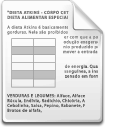Addressing ecological light pollution at a national scale.
Hale, J. and Arlettaz, R. (2018). Addressing ecological light pollution at a national scale.. 5th European Congress of Conservation Biology. doi: 10.17011/conference/eccb2018/107848
Päivämäärä
2018Tekijänoikeudet
© the Authors, 2018
Natural sources of lighting are a major environmental cue that help structure ecological systems, yet these are undermined by artificial lighting which disrupts key processes such as migration, pollination and reproduction. Despite knowledge of diverse impacts and a huge shift towards LED street lighting, conservation practitioners are struggling to respond. We present key findings from a research collaboration between the University of Bern and the Swiss Federal office for the Environment, which aimed to identify practical ways to reduce the ecological impacts of artificial lighting. This project involved a review of the data available on Swiss lighting, a review of the known impacts of artificial lighting on national priority species, and spatial modelling to identify particularly light-sensitive locations. Undertaking such an analysis at a national level had the advantage of bringing the data and research gaps into sharp perspective. We found that in practice, the data used by local governments to manage lighting is typically a database of lamp locations, which also includes entries for lamp type, wattage and height. No national lamp inventory exists, and records for all private sources of lighting (associated with hospitals, commercial and industrial areas) are missing. Other sources of information such as VIIRS satellite data are occasionally used, but only as a broad emission indicator. Some attempts have been made at aerial night photography, but images remain uncalibrated and therefore useful primarily as indicators of bright lighting locations. Nothing is known about the impacts of artificial lighting on the majority of species identified as priorities for nature conservation in Switzerland. Bats are the most well studied group, followed by birds. What was striking was the focus of studies on species reactions to individual point sources of light. In many cases, no information was provided on lamp type, height, luminous flux, wattage, or proximity to the ecological receptor. This is a serious deficiency, as practitioners will inevitably struggle to apply these research results, to identify which locations should be prioritised for mitigation. When considering the responses of these species to natural lighting cues, a range of papers were identified which highlighted the use of the setting sun to calibrate internal compasses or to trigger feeding, and the response to lunar lighting cycles. As a practical response to these deficiencies in lamp data and applicable research, we developed three spatial indicators covering the national extent which reflected three mechanisms by which species might be exposed to lighting. The first identifies priority habitats immediately adjacent to bright emissions, the second uses visibility analysis to identify light polluted viewsheds and the third identifies habitats where natural lunar cycles in sky brightness are undermined. ...
...
 ...
...
Julkaisija
Open Science Centre, University of JyväskyläKonferenssi
ECCB2018: 5th European Congress of Conservation Biology. 12th - 15th of June 2018, Jyväskylä, Finland
Alkuperäislähde
https://peerageofscience.org/conference/eccb2018/107848/Metadata
Näytä kaikki kuvailutiedotKokoelmat
- ECCB 2018 [712]
Lisenssi
Samankaltainen aineisto
Näytetään aineistoja, joilla on samankaltainen nimeke tai asiasanat.
-
The effect of experimental lead pollution on DNA methylation in a wild bird population
Mäkinen, Hannu; van Oers, Kees; Eeva, Tapio; Ruuskanen, Suvi (Taylor & Francis, 2022)Anthropogenic pollution is known to negatively influence an organism’s physiology, behaviour, and fitness. Epigenetic regulation, such as DNA methylation, has been hypothesized as a potential mechanism to mediate such ... -
Thinking the ecological solidarity through trace metal and metalloid pollution transfer from terrestrial area to marine ecosystems in a protected territory: case study of the Calanques National Park
Heckenroth, Alma; Prudent, Pascale; Desrousseaux, Maylis; Laffont-Schwob, Isabelle (Open Science Centre, University of Jyväskylä, 2018)The south coastal area of Marseille (France), included in the Calanques National Park since 2012, is characterized by a rare and remarkable biodiversity, although the terrestrial and marine ecosystems have been impacted ... -
Addressing ecological effects of radiation on populations and ecosystems to improve protection of the environment against radiation : agreed statements from a Consensus Symposium
Bréchignac, François; Oughton, Deborah; Mays, Claire; Barnthouse, Lawrence; Beasley, James C.; Bonisoli-Alquati, Andrea; Bradshaw, Clare; Brown, Justin; Dray, Stéphane; Geras'kin, Stanislav; Glenn, Travis; Higley, Kathy; Ishida, Ken; Kapustka, Lawrence; Kautsky, Ulrik; Kuhne, Wendy; Lynch, Michael; Mappes, Tapio; Mihok, Steve; Møller, Anders P.; Mothersill, Carmel; Mousseau, Timothy A.; Otaki, Joji; Pryakhin, Evgeny (Elsevier Ltd; International Union of Radioecology, 2016)This paper reports the output of a consensus symposium organized by the International Union of Radioecology in November 2015. The symposium gathered an academically diverse group of 30 scientists to consider the still ... -
National high-resolution conservation prioritisation of boreal forests
Mikkonen, Ninni; Leikola, Niko; Lehtomäki, Joona; Halme, Panu; Moilanen, Atte (Elsevier BV, 2023)The continuous decline of forest biodiversity highlights the importance of the development of cost-effective and ecologically sustainable land-use planning approaches. Spatial conservation prioritisation (SCP) can be ... -
Social Ecological Model of Problem Gambling : A Cross-National Survey Study of Young People in the United States, South Korea, Spain, and Finland
Oksanen, Atte; Sirola, Anu; Savolainen, Iina; Koivula, Aki; Kaakinen, Markus; Vuorinen, Ilkka; Zych, Izabela; Paek, Hye-Jin (MDPI AG, 2021)Problem gambling among young people is an emerging trend globally. The online environment in particular offers various possibilities for gambling engagement. This is the first cross-national survey study using the social ...
Ellei toisin mainittu, julkisesti saatavilla olevia JYX-metatietoja (poislukien tiivistelmät) saa vapaasti uudelleenkäyttää CC0-lisenssillä.

